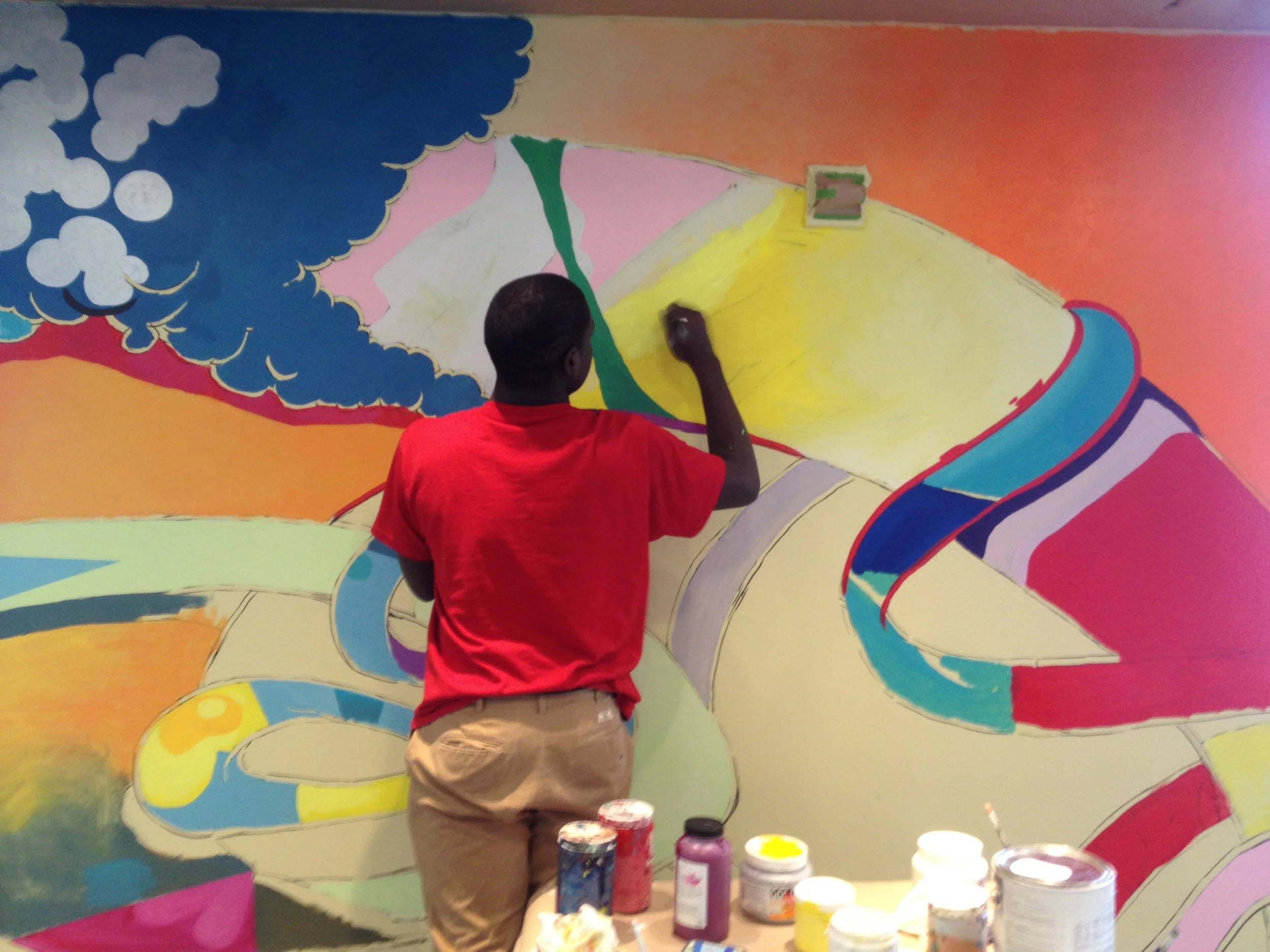















Your Custom Text Here
The mural at Emerson college is on the 10th floor of the Walker Building in the International Center which also houses it's Diversity Center. The mural was designed by artist and muralist Josué Rojas and brought to life by 30 Emerson staff, faculty, students, and community members in June 2014. The mural was created as a way to promote community-building and collaboration.
The name of the mural, Carnival of Life, or Carnaval de la Vida, was revealed at the reception. The Office of Diversity and Inclusion ran a contest to name the mural over the summer. The winning name, which was chosen from 35 submissions, was submitted by Angelika Romero ’15. She describes the mural in this way: “The colors remind me of the happiness that comes along with life. Much like a party or carnival, the journey of life is filled with joy and turns.”
When asked about the abstract, colorful mural, Robert Amelio (Diversity and Inclusion), said that the following words came to mind: “flowing, energy, waves, excitement, fun.”
Amelio explained the process of the mural's creation. He said that the Office of Diversity and Inclusion wanted the 10th floor of the Walker Building to be inviting. “It seemed like the perfect thing to do was to greet people immediately with a beautiful painted wall,” he said. Amelio contacted Joe Ketner, the Henry and Lois Foster Chair in Contemporary Art Theory and Practice and distinguished curator-in- residence, who suggested muralist Josué Rojas, a graduate student in painting at Boston University.
Amelio feels that the mural provides a sense of community for those on the floor, and spoke of the collaborative nature of the project, in which Emerson and Boston community members contributed to the mural that Rojas designed and oversaw. At the October reception, Rojas said, “We are all artists. We can celebrate ourselves as creators.”
He added, “In this very communal process—one which was both improvised and highly designed—I wonder which is the greater gift: the mural itself or its effect on people. Luckily we don’t have to choose.”
The mural at Emerson college is on the 10th floor of the Walker Building in the International Center which also houses it's Diversity Center. The mural was designed by artist and muralist Josué Rojas and brought to life by 30 Emerson staff, faculty, students, and community members in June 2014. The mural was created as a way to promote community-building and collaboration.
The name of the mural, Carnival of Life, or Carnaval de la Vida, was revealed at the reception. The Office of Diversity and Inclusion ran a contest to name the mural over the summer. The winning name, which was chosen from 35 submissions, was submitted by Angelika Romero ’15. She describes the mural in this way: “The colors remind me of the happiness that comes along with life. Much like a party or carnival, the journey of life is filled with joy and turns.”
When asked about the abstract, colorful mural, Robert Amelio (Diversity and Inclusion), said that the following words came to mind: “flowing, energy, waves, excitement, fun.”
Amelio explained the process of the mural's creation. He said that the Office of Diversity and Inclusion wanted the 10th floor of the Walker Building to be inviting. “It seemed like the perfect thing to do was to greet people immediately with a beautiful painted wall,” he said. Amelio contacted Joe Ketner, the Henry and Lois Foster Chair in Contemporary Art Theory and Practice and distinguished curator-in- residence, who suggested muralist Josué Rojas, a graduate student in painting at Boston University.
Amelio feels that the mural provides a sense of community for those on the floor, and spoke of the collaborative nature of the project, in which Emerson and Boston community members contributed to the mural that Rojas designed and oversaw. At the October reception, Rojas said, “We are all artists. We can celebrate ourselves as creators.”
He added, “In this very communal process—one which was both improvised and highly designed—I wonder which is the greater gift: the mural itself or its effect on people. Luckily we don’t have to choose.”